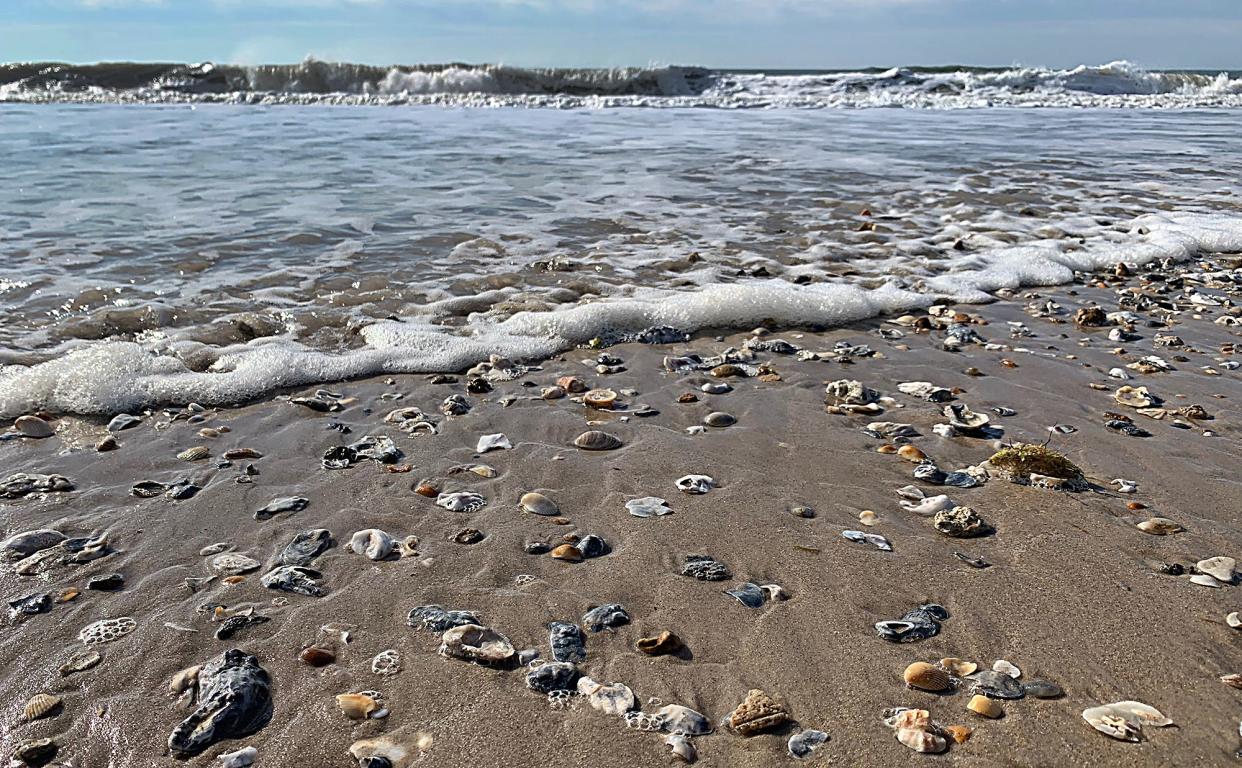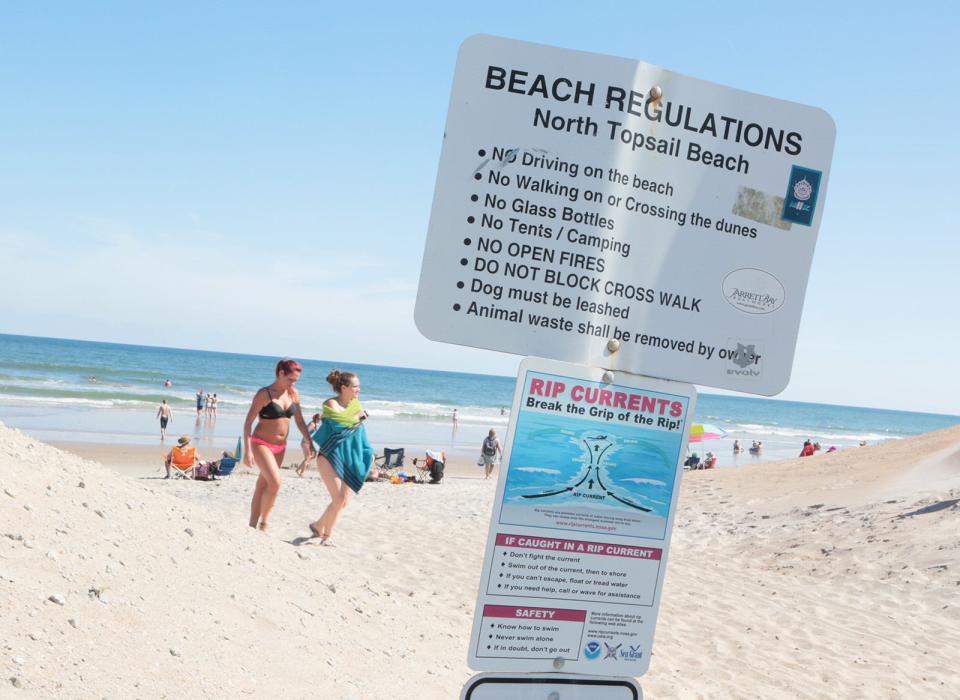Nine years after Onslow teen drowns, officials urge residents to watch for rip currents

Shak Pershey was just 19 years old when he drowned at North Topsail Beach just over nine years ago.
May 24th marked the anniversary of Pershey's drowning, and as summer kicks off, officials urge residents to keep an eye out for beach hazards, especially rip currents. Pershey was a successful quarterback at Southwest High School, and was finishing up his senior year in school at the time of his death.
Previous coverage: Miller column -- Pershey loved Southwest, school loved him
Previous coverage: Scoppe column -- Pershey too young to be gone
Pershey's drowning goes to show that anyone, strong or not, can succumb to the dangers of the ocean's currents.
"For rip currents, they are traditionally one of the biggest killers in our area for weather hazards," said National Weather Service Meteorologist Erik Heden. "So, tornadoes, hurricanes, a lot of those things get headlines, but we've lost more people because of rip currents than tornados and other weather phenomenon that people hear about."
According to the National Weather Service, North Carolina beaches have averaged about 10 rip current deaths a year in the last five years. There were 12 deaths in 2017, nine in 2018, 10 in 2019, four in 2020, and one in 2021.
One of those four in 2020 was at Topsail Beach.
Heden said while the ocean is a fun place to be, it can be dangerous, and the NWS recommends everyone know how to swim, to not swim alone, and try to swim at a lifeguarded beach. He said statistically, it's unlikely you'd die on a lifeguarded beach.
"Once you do those things, be aware of the forecast," Heden said. "If it's a higher risk day, stay out of the water, keep with what the lifeguards say, and then knowing what a rip current is. A lot of folks don't realize, it doesn't pull you under. What is does, is it pulls you out. It's a very strong stream of water. It would be like if you're on a treadmill, running machine, and you're trying to fight it."

What is a rip current, how do I spot it?
"It's not a hazard that... hurricanes have a name, tornados are in the news, so, it's kind of like a hidden hazard," Heden said. "People may not be aware. They look outside, it's sunny, it's a good beach day, but that doesn't necessarily mean it's a good day to be in the water."
Heden said rip currents have been around a long time, and surfers will even use them to get out into the water. He said think of them like conveyor belts of water, that then break at the sandbar.
"So, when you go to the beach, and you see the waves breaking, that's like an elevated bar of sand out there," Heden said. "Whenever there's a gap in it, the water rushes out, and that's what a rip current is. They're naturally occurring."
Rip currents: Camp Lejeune Marine rescued after more than three hours at sea
Though rip currents can occur at any time, Heden said they're mostly at low tide, and they can be hard to spot.
He said the higher up you are, like when you're crossing the dunes to come onto the beach, that's the best time to spot them. When standing on the beach, you can spot a rip current by finding a break in the white waters. It tends to look like the most calm area to swim in.
I'm stuck in a rip current, what do I do?
Heden said when you get pulled out in a rip current, there's a natural inclination to try and swim back against it, which is when many succumb to the fatigue.
He said rip currents are very narrow, so the NWS tries to tell people to relax. Although it's very hard not to fight the current, if you swim left or right, or parallel to the shore, you can escape the stream of water.
However, sometimes the rip current pulls you far out.
"Once you're out of the rip current, if you get pulled all the way out, it stops, and then you can come back in," Heden said. "The only hesitation with that, is it kind of comes back to the swimming part, knowing how to swim. You could be in pretty deep water farther out, so, we just recommend people try to swim left or right initially, just to get out of it instead of being pulled all the way out."
Heden said their biggest issue recently has been people from inland areas coming to visit the beach, and not knowing much about the dangers. He stresses that local folks should inform new residents or visitors of the dangers.

Another common problem are the distant storms off the coast, that tend to have impacts on the waters.
More: Onslow's beach accesses ready for summer: What to know about parking, amenities and more
"We lost eight people due to Hurricane Lorenzo in 2019, and that was more than we lost with Dorian which was a local hurricane, and that was 2,000 miles away," Heden said. "And that was a nice October weekend, it was sunny out, it doesn't necessarily means these huge waves. It's not like a dark ominous sky. With a thunderstorm, it looks scary, you can hear the thunder."
He said last weekend there were a lot of rescues as the population of the beach grew with the warm weather. This weekend, Heden said the NWS is following a distant tropical system, that could definitely impact Onslow's coast.
Heading to Topsail?
North Topsail Beach Fire Chief Chad Soward said they get somewhere between 175-200 calls per season related to beach incidents.
He said their most commons calls are heat-related medical emergencies, swimmers in distress, jellyfish stings, and missing persons calls. He added that the biggest dangers for Topsail beachgoers include the heat, water conditions, and swimming ability, hence why Heden urges residents to know how to swim, and keep an eye on the forecast.
"The biggest tips we give to people are hydrate, hydrate, hydrate," Soward said. "Use a quality SPF sunscreen, and understand the directions for reapplication, and using the National Weather Service for water conditions, and understanding what the different rip current risks mean when being paired with a person’s ability to swim."
For more information on rip currents and beach hazards, or to keep up with the forecast, visit the National Weather Service website, social media, or call 252-223-5737.
Reporter Morgan Starling can be reached at mstarling@gannett.com
This article originally appeared on The Daily News: Onslow beach safety: What safety precautions to take this summer

